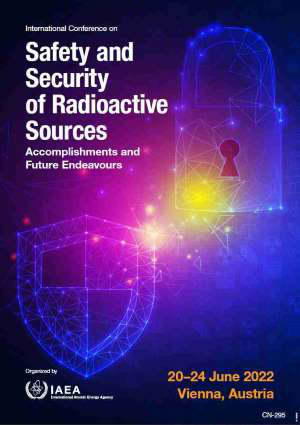Speaker
Description
Without proper end-of-life management, disused sealed radioactive sources (DSRSs) become increasingly vulnerable to loss, theft, and sabotage that can result in accidents and incidents, including loss of life. Type B quantities of radioactive material can be particularly hard to manage due to complexity and costs associated with their compliant shipment from user’s facilities to sites for final disposition or secure long-term storage. Historically, a major part of this issue stems from the lack of certified Type B packaging for safe, secure, and legally compliant shipments.
To help address this issue and enhance safety and security of high-activity DSRS transport, in 2009 the U.S. Department of Energy (DOE), National Nuclear Security Administration (NNSA) Office of Radiological Security (ORS) directed Los Alamos National Laboratory (LANL) to design, test, certify, and fabricate Type B packaging for domestic and international use. Through these efforts, the NNSA Model 380-B Type B (USA/9370/B(U)-96) packaging was developed. The U.S. Nuclear Regulatory Commission (NRC) certified the 380-B in 2017, and since then, one unit has been fabricated and brought into operation.
The 380-B is a heavy (25,000 kg empty), lead shielded container designed primarily for domestic (US) transportation of Type B quantities of Cs-137 and Co-60 sealed sources in devices used for medical, industrial, and research purposes. Maximum activities of Cs-137 and Co-60 payloads are 285 TBq and 1505 TBq respectively. The 380-B is mounted on a dedicated trailer, outfitted with custom designed safety and operational features. The dedicated trailer has work platforms with railings to allow operation of the container without ladders. The trailer also has onboard stands for the cask’s lid and upper impact limiter. These stands increase the safety of surveys and inspections of these items, eliminating the need to work under or near a suspended load. After confirmation that the payload has been loaded in accordance with requirements, it is transported to a secure storage facility in the US until arrangements can be made for final disposition of the sources. This last step represents permanent risk reduction.
Over a decade after first being conceptualized, the 380-B was put into service on May 1, 2021. This was a major achievement for ORS/LANL after putting years of effort into design, certification, and fabrication of the 380-B, and subsequent development of operational infrastructure and processes. The source recovery, which occurred at a hospital in Albuquerque, New Mexico, USA, was that of a blood irradiator containing ~62 TBq of Cs-137 sealed sources. LANL subcontracted a licensed and experienced vendor to prepare the device for shipment, after which LANL personnel loaded the irradiator shield into the 380-B cavity and closed it in accordance with approved procedures. Loading and closure of the 380-B in Albuquerque went smoothly and as anticipated. After approximately seven hours on site, the field crew completed loading of the 380-B and it departed in-route to the interim storage facility.
| Country OR Intl. Organization | USA |
|---|

